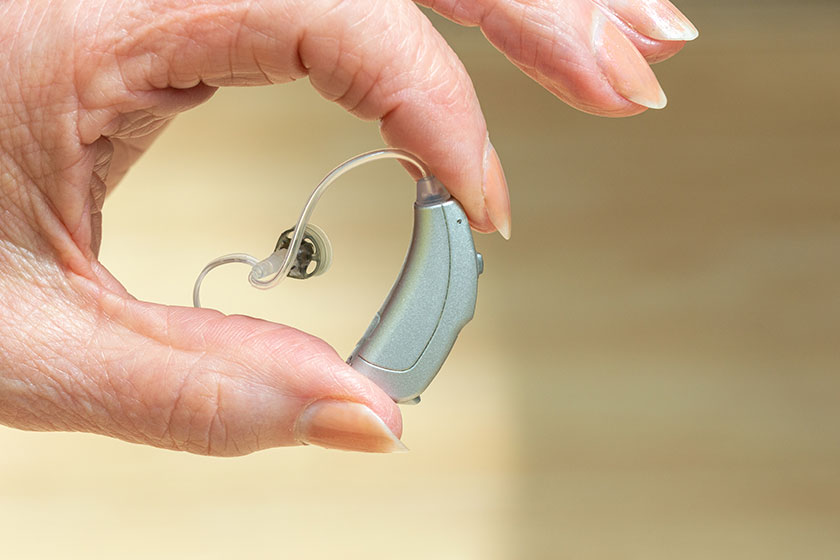Hearing loss is a widespread condition that knows no bounds, affecting individuals of all ages, cultures, and lifestyles around the globe. Despite its common occurrence, a plethora of myths about hearing loss persist, clouding the reality of the condition and obstructing timely diagnosis, effective treatment, and the overall quality of life for those impacted. This article endeavors to illuminate the facts, dispelling the misconceptions and reducing the stigma associated with hearing loss. Through providing precise and reliable information, our goal is to enhance comprehension of this condition, motivate actions toward preserving hearing health, and offer support to individuals dealing with hearing loss in their everyday lives.
Myth 1: Hearing Loss Only Affects the Elderly
The belief that hearing loss is solely a concern for the elderly is a widespread misconception that can lead to delayed diagnosis and treatment in younger populations. While it’s true that the prevalence of hearing loss increases with age, with a significant portion of older adults experiencing some degree of hearing impairment, this condition does not exclusively affect the elderly. Hearing loss can occur at any age due to a variety of factors, including genetic predispositions, exposure to loud noises, infections, and certain medical conditions. For instance, noise-induced hearing loss is a common issue among younger individuals, especially those frequently exposed to loud music or occupational noise without adequate protection.
Moreover, dismissing hearing loss as an age-related issue overlooks the impact it can have on children and adolescents. Early childhood hearing loss, if undetected, can significantly affect speech and language development, academic performance, and social interactions. For these reasons, it’s essential to recognize that hearing loss is a universal concern that requires awareness and attention across all age groups. Regular hearing screenings and education about protective measures against noise exposure are crucial steps in ensuring hearing health is maintained from an early age. By dispelling the myth that hearing loss only affects the elderly, we can promote a proactive approach to hearing care for everyone, regardless of age.
Myth 2: Hearing Loss Is Always Obvious
Another common misconception is that hearing loss is immediately apparent to the person experiencing it or those around them. In reality, hearing loss can be gradual and subtle, making it difficult to notice until it becomes more pronounced. Some individuals may not realize they’re missing out on certain sounds or frequencies or may attribute their difficulty in understanding speech to other factors, such as background noise. Regular hearing check-ups are essential to detect any changes in hearing early on.
Myth 3: Mild Hearing Loss Is Not a Big Deal
People often underestimate the impact of mild hearing loss, thinking it’s not severe enough to warrant attention. However, even a slight reduction in hearing can affect communication, social interactions, and overall quality of life. It can lead to misunderstandings, frustration, and social withdrawal. Addressing mild hearing loss with appropriate interventions, such as hearing aids, can significantly improve an individual’s ability to engage with others and their environment.
Myth 4: Hearing Aids Restore Hearing to Normal
While hearing aids are a fantastic tool for improving communication and quality of life for those with hearing loss, they do not “cure” hearing loss or restore hearing to normal. Instead, they amplify sounds, making it easier for the wearer to hear and understand speech and other sounds. It’s important to have realistic expectations and work closely with an audiologist to find the best solution for your specific needs.
Myth 5: You Only Need One Hearing Aid for Unilateral Hearing Loss
When hearing loss affects only one ear, some people believe that they only need a hearing aid in that ear. However, using hearing aids in both ears, when appropriate, can provide a more balanced and natural listening experience, improve the ability to localize sounds, and reduce the strain of trying to hear with only one ear. An audiologist can assess your hearing and recommend the best approach for your situation.
Myth 6: All Hearing Aids Are the Same
There is a wide variety of hearing aids available, each with different features, styles, and levels of technology. The best hearing aid for an individual depends on various factors, including the degree and type of hearing loss, lifestyle, and personal preferences. It’s essential to work with an audiologist to find a hearing aid that meets your specific needs and enhances your listening experience.
Myth 7: Hearing Loss Doesn’t Affect Mental Health
Hearing loss is not just a physical condition; it can also have profound psychological and emotional effects. Individuals with untreated hearing loss may experience social isolation, depression, anxiety, and a reduced sense of well-being. Acknowledging the mental health impact of hearing loss is crucial for providing comprehensive care and support.
Myth 8: Surgery Is the Only Solution for Hearing Loss
While surgery stands as a viable option for some forms of hearing loss, it’s important to understand that it’s not a universal remedy. The nature and severity of the hearing impairment dictate the treatment pathway, which could range from hearing aids and cochlear implants to assistive listening devices, or even a comprehensive blend of these solutions. Consulting with an audiologist is crucial, as they possess the expertise to assess your condition thoroughly and recommend a tailor-made treatment plan. This professional guidance ensures that each individual receives the most suitable intervention, addressing their unique hearing challenges with the most advanced and compatible technologies available.
Myth 9: If You Can Hear Loud Sounds, You Don’t Have Hearing Loss
Many people believe that if they can hear loud noises, their hearing is fine. However, hearing loss often affects specific frequencies or ranges of sound. You might be able to hear loud sounds but struggle to hear softer, higher-pitched sounds, like the voices of children or birds chirping. This is why it’s important to have a comprehensive hearing test that evaluates your ability to hear across different frequencies.
Myth 10: Sign Language Is the Only Communication Option for Those with Hearing Loss
While sign language is an important form of communication for many in the Deaf community, it’s not the only option for individuals with hearing loss. Depending on the level and type of hearing loss, people may use a combination of speechreading (lip-reading), written communication, hearing aids, cochlear implants, and other assistive listening devices to communicate effectively.
Myth 11: Hearing Loss Only Affects Your Ears
Hearing loss is not just an ear issue; it’s a complex condition that can impact various aspects of your life, including your physical, mental, and social well-being. Untreated hearing loss has been linked to cognitive decline, increased risk of falls, and social isolation. It’s important to view hearing loss as a holistic health concern and seek appropriate treatment and support.
Myth 12: Loud Noise Exposure Is the Only Cause of Hearing Loss
While exposure to loud noises is a significant risk factor for hearing loss, it’s not the only cause. Other factors such as aging, genetics, certain medications, infections, and medical conditions can also contribute to hearing loss. It’s essential to understand the various causes and take preventive measures to protect your hearing health.
How The Peaks at Old Laramie Trail Can Help
At The Peaks at Old Laramie Trail, we understand the challenges that come with hearing loss, and we’re committed to providing support and accommodations to enhance the quality of life for our residents. Our community offers a range of services and features designed to assist those with hearing loss, including:
- Hearing Aid-Compatible Technology: Our facilities are equipped with hearing aid-compatible technology to ensure that residents with hearing aids can enjoy clear and amplified sound during activities and events.
- Visual Alert Systems: For residents with significant hearing loss, we offer visual alert systems in our apartments, including flashing lights for doorbells, phones, and fire alarms to ensure safety and communication.
- Communication Assistance: Our team is trained to communicate effectively with residents who have hearing loss, using clear speech, visual cues, and written communication as needed.
- Supportive Community: We foster a supportive and inclusive community where residents with hearing loss can connect, share experiences, and participate fully in social activities and events.
At The Peaks at Old Laramie Trail, we believe that hearing loss should not be a barrier to enjoying a fulfilling and vibrant life. Our dedicated team is here to provide the support and accommodations needed to ensure that every resident can thrive, regardless of their hearing abilities. Dispelling the myths surrounding hearing loss is vital for breaking down barriers and promoting a more inclusive and supportive environment for those affected. By challenging these misconceptions, we empower individuals to seek appropriate care, embrace effective communication strategies, and lead fulfilling lives without being hindered by hearing loss. At The Peaks at Old Laramie Trail, we are committed to providing a nurturing and accommodating community that recognizes the diverse needs of our residents, including those with hearing loss. We strive to ensure that every resident has access to the tools and support they need to thrive, fostering a sense of belonging and well-being. Together, we can shift perceptions, enhance understanding, and create a world where hearing loss is acknowledged, addressed, and no longer stigmatized.

